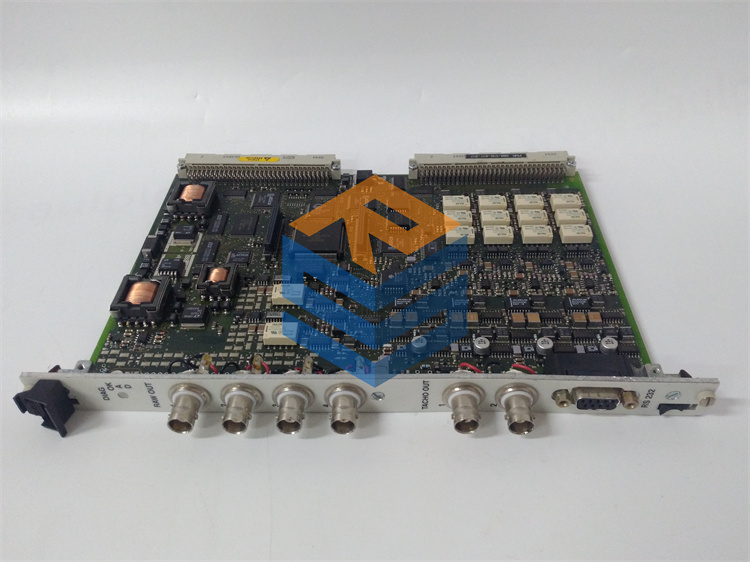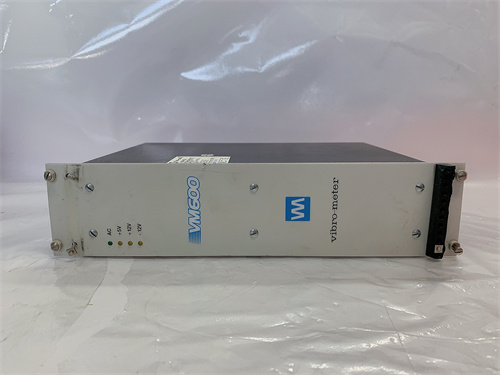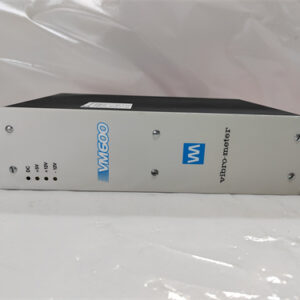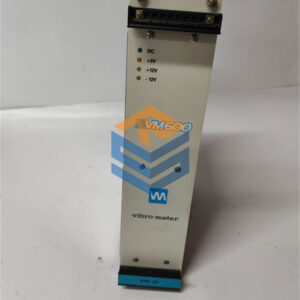الوصف
Here’s a detailed response for the VIBRO-METER VM600-ABE040 204-040-100-011 DCS PLC Module:
Product Name
VIBRO-METER VM600-ABE040 204-040-100-011 DCS PLC Module
Product Description
The VIBRO-METER VM600-ABE040 204-040-100-011 is a high-performance Distributed Control System (DCS) and Programmable Logic Controller (PLC) module, designed to provide precise, reliable vibration monitoring and control for critical rotating machinery. As part of the VIBRO-METER VM600 series, the ABE040 204-040-100-011 module is engineered to help users monitor machine health, prevent failures, and optimize performance in complex industrial environments.
The module integrates seamlessly with the VIBRO-METER VM600 platform, enabling real-time data collection, processing, and reporting of vibration measurements from various sensors. It is widely used in industries such as power generation, oil & gas, mining, and industrial manufacturing, where reliable vibration monitoring is crucial to ensure machinery safety and performance.
Product Parameters & Specifications
- Model: VIBRO-METER VM600-ABE040 204-040-100-011
- Type: Vibration Monitoring and Control Module for DCS/PLC Systems
- Power Supply: 24V DC (Nominal)
- I/O Interface:
- Input Channels: Up to 4 vibration sensor inputs
- Output Channels: 4 (for controlling alarms, outputs, etc.)
- Signal Processing: Advanced signal processing algorithms for vibration data
- Communication:
- Fieldbus Communication: Profibus, Modbus
- Ethernet for integration with other systems
- Direct communication with VM600 system network
- Environmental Conditions:
- Operating Temperature: -20°C to +60°C
- Storage Temperature: -40°C to +85°C
- Humidity: 0% to 95%, non-condensing
- Accuracy: ±0.5% of full-scale range
- Data Logging: Supports local data storage for system diagnostics
- Mounting Type: Rack-mounted for integration into control systems
- Diagnostics: Built-in self-diagnostics for real-time monitoring and troubleshooting
- Compliance: CE, UL, and other relevant safety certifications for industrial use
- Dimensions: 19” rack-mounted form factor
- Weight: Approx. 1.8 kg
Key Features
- Advanced Vibration Monitoring: The module processes vibration data from sensors to monitor the condition of rotating machinery, identifying potential issues such as imbalances, misalignments, or bearing wear.
- Real-Time Alarm Management: The module can trigger alarms based on predefined thresholds for vibration levels, providing early warning for maintenance actions.
- Seamless Integration: Designed to integrate easily with the VIBRO-METER VM600 system, enabling centralized control of all vibration monitoring activities within the plant.
- Multi-Channel Input: Capable of handling multiple vibration sensor inputs, allowing for comprehensive monitoring of different parts of machinery simultaneously.
- Signal Processing Capabilities: Provides advanced algorithms for analyzing vibration frequencies, amplitudes, and other critical parameters.
- Diagnostic and Maintenance Support: Features built-in diagnostics that provide detailed insights into system health and performance, helping users reduce downtime and increase operational efficiency.
- Reliability and Robustness: Built for use in harsh industrial environments, the VM600-ABE040 204-040-100-011 is capable of operating under a wide range of environmental conditions.
- Flexible Communication: Compatible with common communication protocols like Profibus, Modbus, and Ethernet, making it easy to integrate with existing PLC/DCS systems.
Applications and Use Cases
The VIBRO-METER VM600-ABE040 204-040-100-011 is designed for applications that require continuous, real-time monitoring of vibration levels in industrial machinery, such as:
- Power Generation Plants: Monitoring the health of turbines, compressors, and other critical machinery to prevent failure and improve uptime.
- Oil & Gas: Ensuring the safe operation of pumps, motors, and compressors in extraction and refining operations.
- Mining and Heavy Industry: Tracking the condition of crushers, conveyors, and other equipment that experiences high mechanical stress.
- Manufacturing Facilities: Protecting motors, fans, and pumps from wear, misalignment, and imbalance to extend the life of equipment.
Selection and Integration Considerations
When selecting the VIBRO-METER VM600-ABE040 204-040-100-011 for your system, consider the following:
- Number of Channels: Ensure the module’s number of vibration sensor input channels meets your monitoring needs (up to 4).
- Integration with Existing Systems: Ensure compatibility with other systems via supported communication protocols (e.g., Profibus, Modbus).
- Environmental Requirements: Consider the operating environment’s temperature, humidity, and potential for vibration or mechanical shock, ensuring the module is robust enough for your application.
- Maintenance Needs: Take advantage of the diagnostic features to streamline maintenance schedules and minimize downtime.
- Sensor Types: Verify that the vibration sensors you are using are compatible with the module’s input specifications.
For more detailed information or inquiries, you may contact VIBRO-METER or consult the product documentation for integration and installation guidelines.
Let me know if you’d like to refine any of the details or if you need further assistance!

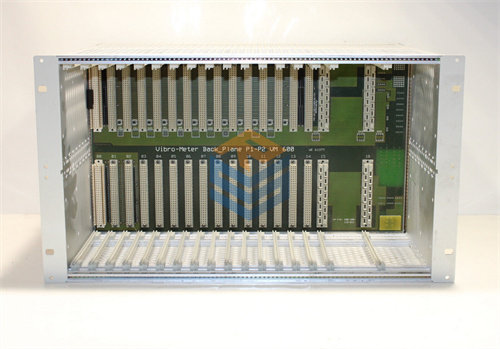

 +86 15340683922
+86 15340683922 +86 15340683922
+86 15340683922